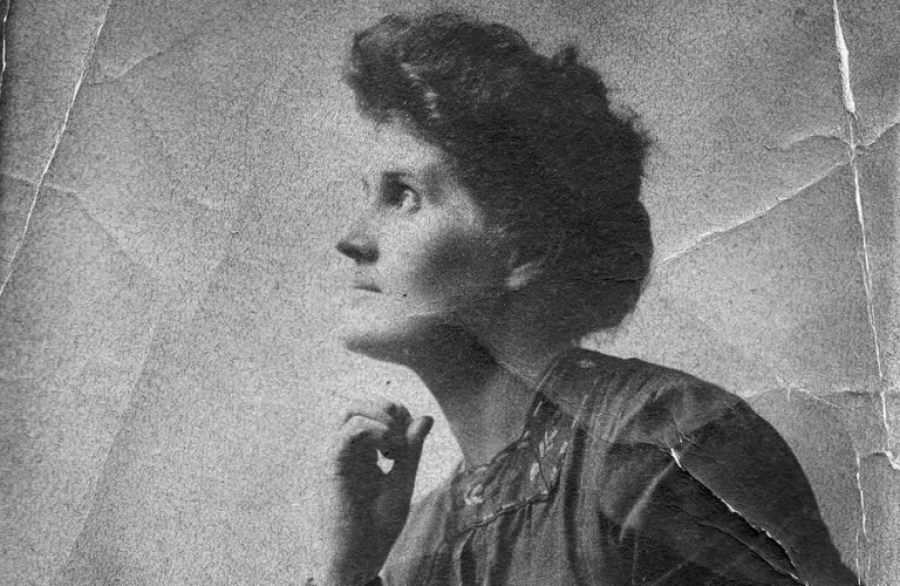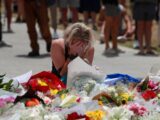I’m staring intently at Cemetery Of The 7th Battalion, a 1919 oil painting by Canadian war artist Mary Riter Hamilton and wondering — would I scour it the same way if my son was buried under one of these haphazard white crosses planted in the muddy field of the Great War?
Standing in the lobby of the Canadian War Museum, viewing 15 of Hamilton’s post-war masterpieces, I am moved to tears—not just because her paintings gave families insight and comfort or that they documented the environmental ravages of war, but because she painted them at all.
You may unsubscribe from any of our newsletters at any time.
Born in Teeswater, Ont. in 1873 and raised in Clearwater, Man., Hamilton moved back to Ontario when she married at 18. But then she experienced two tragedies: she gave birth to a stillborn son and her husband died, and she decided to become an artist. Her career path wasn’t a unique one for a woman of her time, but it was certainly unusual. Hamilton studied art in Toronto and then moved to Paris where she spent a decade training in professional academies. She was working as an artist in Victoria, B.C. when the First World War broke out.
In 1917, she applied to the Canadian War Memorials Fund, interested in capturing Canada’s participation in the war through art. But the terms of the fund stipulated that only men could venture onto the battlefields. Hamilton persisted. Eventually, the Amputation Club of British Columbia — an organization that led to the creation of the War Amps — gave her a commission to paint the aftermath of the conflict for their magazine Gold Stripe. On March 18, 1919, she set sail to France.

“The only artists on the field at the time of the war were male and most of the time were military, people who were already serving. They did hire a few women but they worked back home in Canada documenting the war here, like a munitions plant or somewhere where women were working,” says Sarah McKinnon, co-author of No Man’s Land: The Life And Art Of Mary Riter Hamilton (University Of Manitoba Press, 2017), from her home office in Toronto. “It was quite unusual. That’s part of the uniqueness of her story.”
Flipping through the book, I settle on a photo of Hamilton painting in a barren battlefield wearing a long dress and a wide-brimmed hat, two dogs at her feet. “She had dogs for companionship and protection,” says McKinnon, filling out the context I can’t see. “Out on the battlefields there were deserters, people who were hired to work there to clean. There was live ammunition. There weren’t tools or support. As a woman alone, she had some fear.”
Hamilton stayed in France and Belgium for three years, creating over 300 paintings of battlefields and cemeteries on canvas and in leaner times, on bits of cardboard. Her work shows the after-effects of war: the mangled trees and muddy earth, the men sweeping the fields to retrieve unexploded shells, the families moving into abandoned huts, the first tour groups to visit the war zones. “I came out because I felt I must come, and if I did not come at once, it would be too late, because the battlefields would be obliterated, and places watered with the best blood of Canada might be only names and memories,” she wrote in a letter to Dominion archivist Arthur Doughty in July 1926.
“Why have I never heard of Hamilton?” I wonder aloud. McKinnon says she thinks that could be because of a shift in Canadian sensitivities after the war and the artist’s poor health.

Hamilton’s early war art drew interest from Canadians back home. But in the ensuing years, the nation sought to recreate life around the loss and brokenness caused by a war that lasted longer than expected and was more costly than imagined. Canadians weren’t as enamoured by reminders.
“The whole weariness of the war just didn’t lend itself to interest in her greatest artistic output. Plus, she was blind in one eye,” says McKinnon. “She was almost 60 when she came home. She wasn’t in good health. She couldn’t quite promote herself as she had earlier in her life. She became a kind of charity case.”
From the mid-1930s on, Hamilton was a charge of the family Welfare Bureau, and in and out of hospital and psychiatric institutions, relying partially on the charity of the church. In 1948, Vancouver United Church minister Dr. Douglas Telfer revived some interest in her work when he sponsored an exhibition in the manse. The members of his congregation retrieved and cleaned pieces of hers that had grown moldy in an unused room of the Vancouver Public Library. They were stored, a newspaper reported, “among lumber and other junk.”
At the War Museum, I circle back to the start of the exhibition, which marks the centenary of the War Amps Of Canada. It’s unfathomable that paintings like these were rotting in a closet. The story of the work itself speaks to the title of the exhibit: “Resilience.” Did patriotism fuel Hamilton’s resolve to travel to places where no other woman artist could go and her efforts to commemorate our dead? Was it personal loss or artistic prowess that trained her eye and heart to paint a picture like Trenches On The Somme, in which red poppies grow like hope blazing among the trenches?
Despite her poverty, in 1926, Hamilton donated 227 of her post-war paintings, drawings and pastels to the Public Archives of Canada (now Library And Archives Canada) as a gift to the country. Hamilton said she hoped her work “would prove a true record of things Canada would wish to remember.” Her hope that Canadians would recall the realities of war she portrayed in her art mirrors my hope for her—that they will also deem her an artist worthy of remembrance.














